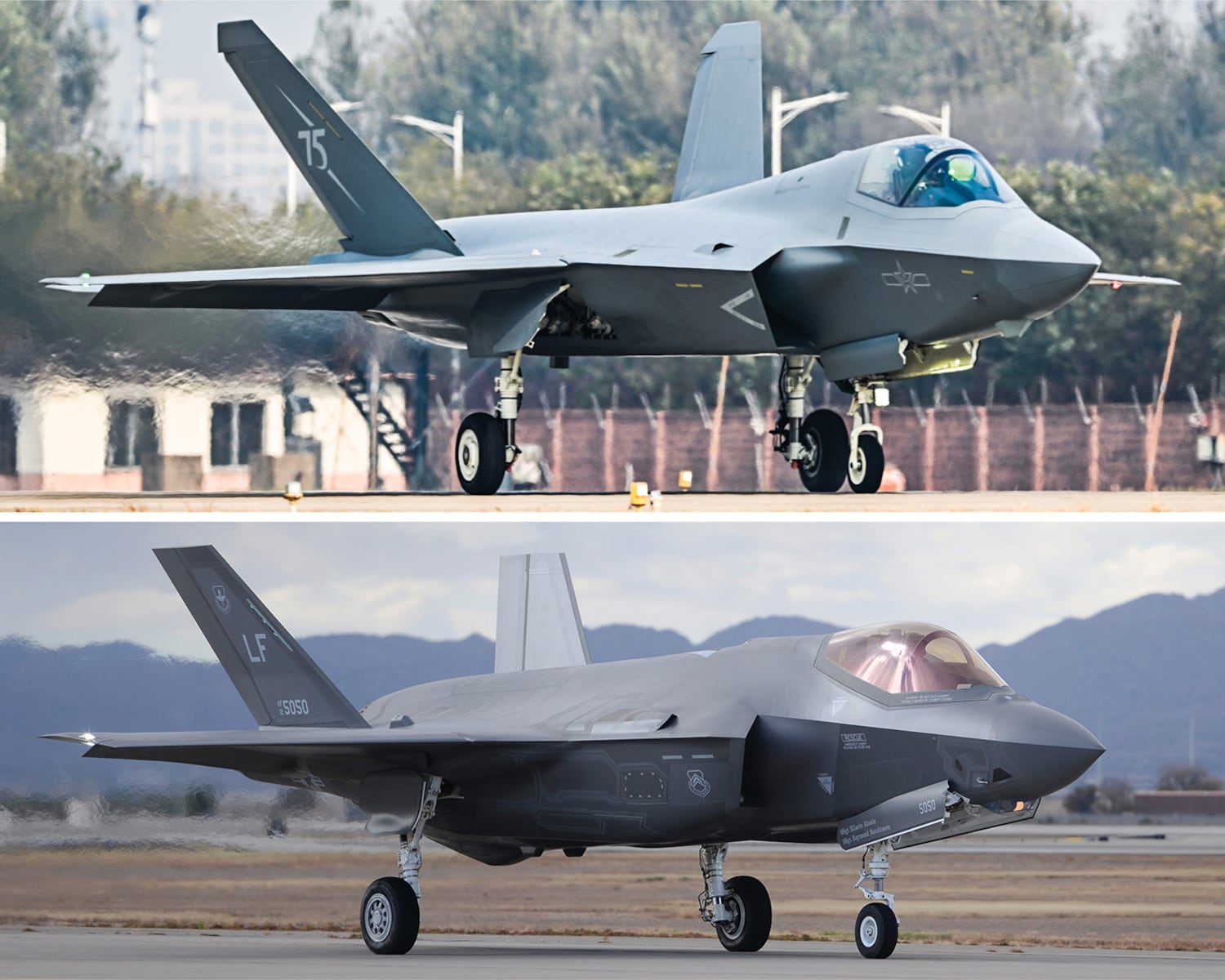When it debuted at an air show in Zhuhai, China, earlier this month, the J-31 fighter plane made an impression.
Produced by a Chinese aviation company, Shenyang, the new jet took more than a decade to build- and bears more than a passing resemblance a U.S. fighter, the F-35, made by Lockheed Martin.
As the U.S. Air Force’s chief of staff, David Allvin, told Air & Space Forces Magazine, the similarities between the two aircraft were striking. Both models have silver-grey wings, a pointed nose and a smooth, slicked-back design. Though made in two different countries, they looked as if they came from the same factory. If you were to put the two jets side-by-side, said Allvin, you could practically see where they both “got their blueprints.”
That in itself is an achievement for the Chinese military, which has for years struggled to compete with the U.S. military advances. Still, there are differences between the two aircraft.
The Chinese-made J-31 is more svelte than the American jet—despite the fact that the Chinese model has two engines, while the U.S.-made F-35 has one.
Chinese designers may have chosen to build their aircraft with two engines to give the jet more power, says Douglas Royce, a senior aircraft analyst with the Sandy Hook, Connecticut-based research company, Forecast International.
But the design could have also been chosen for a more primitive reason: the second engine could serve as a backup in case of mission failure.
“Maybe they have less faith in the reliability of the aircraft,” says Greg Malandrino, a former U.S. fighter pilot now at the Center for Strategic and Budgetary Assessments.
Chinese pilots will have to make do with a smaller workspace than American F-35 pilots, according to Boyko Nikolov, the head of a media company Bulgarian Military. The U.S. fighter jet’s cockpit is cushier, roomier, with a bigger canopy, while the Chinese plane’s cockpit reflects “a more utilitarian approach to pilot ergonomics,” according to Nikolov.

Malandrino, says he did not notice any significant differences in the design of the two cockpits. Besides, as he points out, the cockpit of a fighter jet, whether Chinese or American, is not known for comfort. The seat is designed to provide the pilot with a way out of a tricky situation.
“You’re sitting on ejection seat,” he says. “It’s basically a rocket seat.”
Others questioned whether the Chinese jet, however well-designed, is all that sneaky. According to aviation expert Dario Leone, the J-31 spits a lot of smoke from its exhaust pipe when it’s in the air, which could make it easier to detect the plane.
But experts agree that the real power of a fighter jet lies in the overall strength of the military they serve. Says Forecast International’s Royce: “People are thinking about two jets operating in a dog fight. But in the real world, it depends on the entire combat system.”
“Until the two countries fight, it’s just guesswork,” Royce says. “You really don’t know till the shooting starts.”
This content originally appeared on Radio Free Asia and was authored by Tara McKelvey.
This post was originally published on Radio Free.